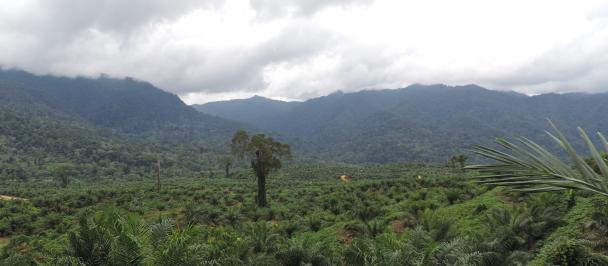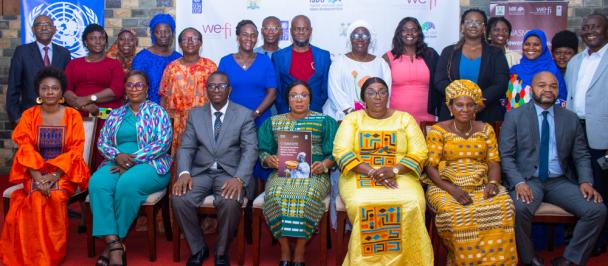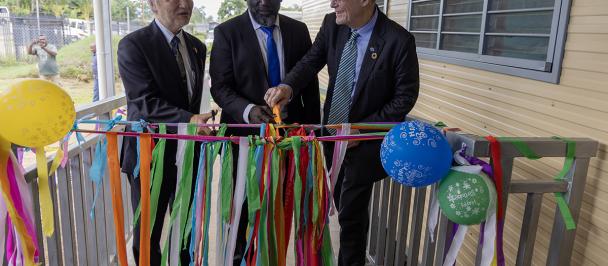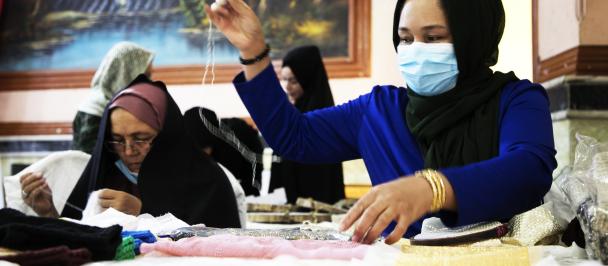170 lakes identified in the Indonesian capital in digital mapping exercise to mitigate floodings
August 10, 2022

Jakarta, August 10th 2022 — At least 170 natural and artificial lakes in the Indonesian capital have been digitally surveyed in a joint mapping exercise by the city’s authorities and the United Nations Development Programme's (UNDP) Accelerator Lab, to mitigate future floodings.
The survey assessment involved active participation from communities and was part of the government's larger attempts to highlight the critical role of lakes in accommodating some of the extra water during the rainy season.
The collection of data was conducted in partnership with the Project Management Office (PMO) of the Jakarta metropolitan area, otherwise known as Jabodetabekpunjur, and the Indonesian OpenStreetMap Association (POI).
Communities took part in the assessment through open-source digital applications, such as Ushahidi and Mapillary. Ushahidi was used to collect information on physical aspects of the city’s lakes, while Mapillary was used to collect photos of the area. The activities cross-checked the validity of data which had been collected during previous mapping exercises.
“We intend to boost flood mitigation efforts through crowdsourcing and involve communities in the solution. We are using open-source apps to ensure transparency and access of information for the public. We also combine qualitative data with satellite photography, and field pictures to produce more thorough results,” said Aisha Marzuki, Head of Exploration, UNDP Accelerator Lab Indonesia.
The government plans to use the collected data for future lake management.
“We envision this activity will help establish a regulation on lake governance. We hope to identify the lakes that need to be administered by the central government and those that need to be administered by district or provincial governments, “said Wisnubroto Sarosa, Director of PMO Jabodetabekpunjur.
Information on the physical condition of the lake and its surroundings, such as inlet and outlet structures that control the water flows, will enhance the government’s existing data to identify the lakes’ ability to store water during floods. This will provide an opportunity to carry out a participatory mapping process involving the community.
“We conducted a two-day intensive training on technical skills around data input to prepare for local surveyors for the mapping exercise. Our team went on to verify the data and findings from the field. The result was an innovative and dynamic map that promotes interactions with users,” said Dewi Sulistioningrum, Head of the Indonesian OpenStreetMap Association.
Findings show that 24 percent of the mapped lakes were flooded approximately twice a year. Lake administrators play an instrumental role to mitigate flooding through routine cleaning of the waterways. However the role is disproportionately held by men. The findings also demonstrate that the few female lake managers have gone above their line of duty, such as cleaning up the lakes and organizing fund-raising for a clean-up.
Additionally, 103 out of the 170 lakes mapped are managed by the government, which provides an opportunity to regulate the remaining lakes under evidence-based policy. It is expected that similar initiatives will contribute to digital transformation in urban areas, as part of the government’s push to achieving the Sustainable Development Goals in 2030.
The results of the mapping exercise can be accessed at https://situ-jabodetabekpunjur.ushahidi.io/.
###
MEDIA CONTACTS:
UNDP Indonesia Head of Exploration, Aisha Marzuki, aisha.marzuki@undp.org
UNDP Indonesia Communication Specialist, Tomi Soetjipto, suryo.tomi@undp.org

 Locations
Locations



